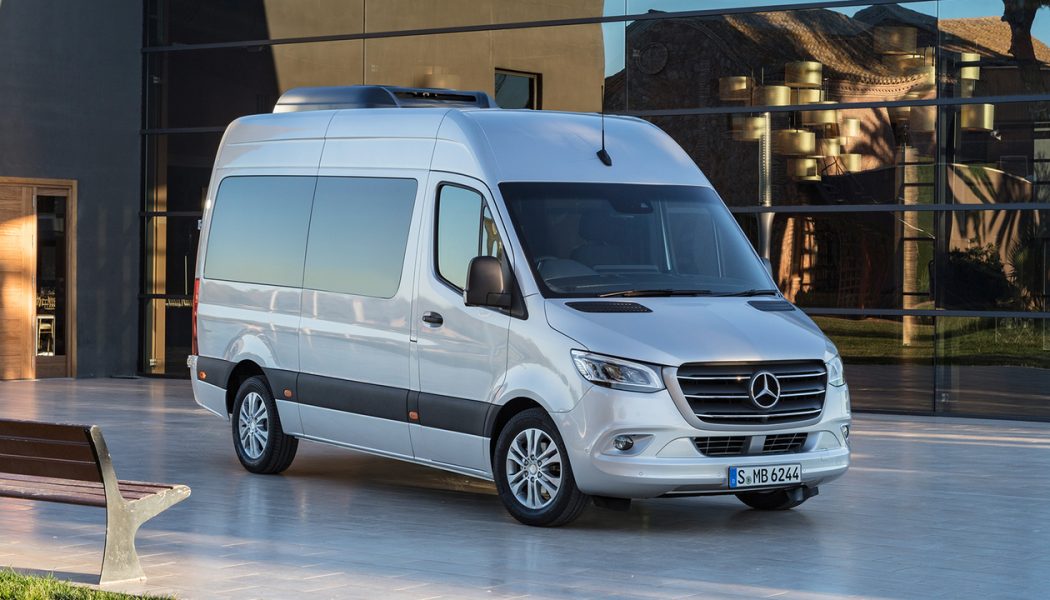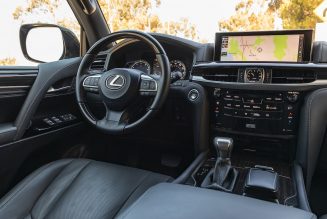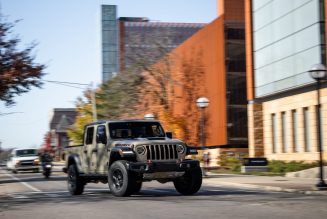Mercedes-Benz Sprinter Full Overview
I love a good pickup, but vans such as the Mercedes-Benz Sprinter 4×4 have me convinced that what Americans really need is a good full-size van and not one of the hundreds of thousands of pickups our compatriots buy each year. While pickups have—for better or worse—become quicker, more luxurious, and more technologically advanced, vans such as the third-generation 2019 Mercedes-Benz Sprinter 4×4 have remained laser-focused on one thing: work.
Sprinting to Work
I probably alienated five out of every four pickup buyers with my previous paragraph, but when it comes to actual work, the only thing a pickup can really do better than a van is tow a heavier load; when it comes to hauling, the van is king.
You have the Sprinter to thank for that. Many of you may remember the Dodge Sprinter of the early aughts. A replacement for the Dodge Ram Van, the Dodge Sprinter—essentially little more than a first-generation Mercedes-Benz Sprinter with a crosshair grille—introduced Americans to the wonders of a European-style van. Compared to the pickup-based doghouse-style vans on American roads at the time (think Ford Econoline/E-Series, or the current Chevrolet Express, which coincidentally hasn’t changed much since its 1995 launch), the Sprinter was purpose-built from the ground up to be a van. It was available as a cargo or passenger van with multiple lengths and roof heights (allowing people to stand up straight inside), with slab sides and a stubby hood that hid a diesel engine underneath to maximize space and performance.
Sprinting Toward a New Generation of Van
There’s quite literally a Sprinter variant for every conceivable purpose—a cargo van, crew van (think crew cab pickup with an enclosed bed), chassis cab, and passenger van. Mercedes also offers two wheelbases (144 and 170 inches), three different lengths (234, 274, and 290 inches), and two different roof heights (regular and high). There are also three engine options (a gas, turbo 2.0-liter I-4 making 190 hp and 258 lb-ft of torque; a turbo-diesel 2.0-liter I-4 making 161 hp and 266 lb-ft; and a turbo-diesel 3.0-liter V-6 producing 190 hp and 324 lb-ft) and two transmission choices (nine-speed auto for the gasser and seven-speed autos for the diesels). Rear-wheel drive is standard across the board, but the diesel V-6 model offers both all-wheel and four-wheel drive options.
We’ll skip diving deep into the variety of weight classes Mercedes offers for the Sprinter, but there are 1500-, 2500-, 3500-, and 4500-series vans, with the ability to tow up to 7,500 pounds or to haul 6,636 pounds—the latter figure will make a Ford Super Duty pickup blush.
Our test unit was a four-wheel-drive 2019 Mercedes-Benz Sprinter 2500 passenger van with a 144-inch-wheelbase model and the high roof option. It could hold up to 12 passengers, and anyone just shy of an NBA star ought to have no trouble standing up inside of it. Why a 2019 model? Because the likes of Amazon, FedEx, UPS, and others are buying Sprinters by the buckets, and this 2019 model is all that Mercedes has in its fleet. Rest assured, little has changed about the Sprinter in the ensuing years. The coming 2021 models get a little more standard active safety gear, but that’s about it.
Features-wise, this test van was pretty bare-bones for a Sprinter. Its most expensive option was the Low & High Range 4×4 package, a $7,800 extra on our 2019 model year tester, and the Driver Convenience pack ($1,210) that includes features such as blind-spot monitoring and a multi-function steering wheel.
That’s not even half the tech Mercedes offers in the Sprinter. Adaptive cruise control, lane-keep assist, and even the brand’s MBUX infotainment system, which works with a 10.4-inch touchscreen, are all available. And, although the cabin will never be as luxurious as something such as a GLE or GLS, its fit, finish, and materials quality easily matches that of models like the GLB.
Easy Rider
You wouldn’t think so given its size, but shockingly this big Benz drives rather well. Engineered primarily for narrow European roads, the 2019 Sprinter van drives far smaller and, well, sportier than its 234-inch length and 118-inch height suggest.
“I wasn’t expecting much, but I came away impressed,” road test editor Chris Walton said. “Very communicative and precise steering, amazingly effective and consistent brakes … fun in its own way.”
The Sprinter’s slow-steering rack is both low-effort and accurate, allowing you to confidently place the van on the road, and the van’s power is pretty good, too. The carryover turbo-diesel V-6 is a hair laggy off the line, but the turbo comes on quickly just north of 1,000 rpm, providing a strong surge of torque that only begins to peter out around 5,000 rpm—just as the engine hits redline. Uncharacteristically for a diesel, the Sprinter’s V-6 tends to rev quickly, and it reveals itself to be plenty potent even when the van is loaded with cargo.
The Sprinter’s new transmission has a lot to do with that. A welcome improvement over the old five-speed unit, the new seven-speed automatic features short gear ratios and upshifts quickly, helping the van get off the line far quicker than you’d expect. The new gearbox has an annoying tendency to upshift early on long uphill grades, but it responds quickly to downshift requests, delivered via standard steering-wheel-mounted paddle shifters.
Fast Sprinter
At the test track, the Mercedes-Benz Sprinter 4×4 accelerated from 0 to 60 mph in 11.6 seconds and on through the quarter mile in 18.3 seconds at 73.0 mph. That’s a solid improvement on the last-generation Sprinter, the quickest of which (a rear-drive Sprinter 2500 passenger van with the diesel V-6) accelerated to 60 mph in 12.4 seconds and through the quarter in 18.7 seconds at 71.8 mph. It’s also a fair bit quicker than the recently discontinued Ford Transit diesel (12.5 seconds to 60 mph for a Transit 350 cargo van), but far slower than any Transit equipped with the optional twin-turbo 3.5-liter V-6. The last one of those we tested, a passenger van, hit 60 mph in 9.4 seconds with 10 passengers on board; with just a driver, its quickest run was an impressive 7.6 seconds.
Aided by its good brake feel, the 2019 Sprinter 4×4’s best 60-0 mph panic stop measured 136 feet, while it lapped our figure-eight course in 34.2 seconds averaging 0.41 g.
Four-Wheel-Drive Sprinter
Although we didn’t have the opportunity to take this particular Mercedes-Benz Sprinter 4×4 van off-roading, the van’s four-wheel-drive setup is mechanically identical to the system used on the previous-generation Sprinter 4×4—which could be a shockingly capable off-roader when equipped with all-terrain tires (and provided you choose your path carefully to mitigate its middling breakover angle). Like the old Sprinter 4×4, the new one gets a suspension lift and an all-wheel-drive system that’s engaged via a small black chiclet of a button with hieroglyphics, located near the driver’s right knee.
Tapping the button turns on a little red light, signifying all-wheel drive is engaged (with a 35:65 front and rear torque split). Opting for the aforementioned low-range package nets the Sprinter 4×4 a proper four-wheel-drive system, with a two-speed transfer case and a low-range that’s engaged via another chiclet button (and a 50:50 torque split). Unlike a G-Wagen, no locking differentials are available on the Sprinter 4×4. All diff “locking” comes via a brake-based system tied into the van’s electronic stability- and traction-control systems.
Sprinting to the Bank
The cheapest 2021 Sprinter is the $38,000 1500 cargo van equipped with the gas 2.0-liter engine, 144-inch wheelbase, and standard roof. Sprinter 2500 crew vans (the sweet spot for people- and cargo-hauling) with the same engine, wheelbase, and roof option start at $43,020. Sprinter 1500 passenger vans (again, with the same engine, wheelbase, and roof options) start at $42,290.
The turbo-diesel V-6 is a $6,125 option on the passenger van for the 2020 model year (bumping the Sprinter up a weight class from a 1500 to 2500), and all-wheel drive is $7,975. Our frills-free 2019 Mercedes-Benz Sprinter 2500 4×4 with the high roof and 144-inch wheelbase carried an as-tested price of $61,333.
A Van Worth Sprinting For?
The Sprinter 4×4 is pricey, but with the average new pickup (including midsize, full-size, and heavy-duty) selling for more than $50,000, the Sprinter’s pricing is competitive with bigger, more capable trucks. While the Sprinter’s towing capacity may never match that of full-size and heavy-duty pickups, the Sprinter 4×4’s unique combination of utility, payload capacity, and off-road capability—not to mention its relative efficiency and maneuverability—make it an enticing choice for those who can think outside the box. Or, more appropriately, inside it.
| 2019 Mercedes-Benz Sprinter 2500 4×4 | |
| BASE PRICE | $50,185 |
| PRICE AS TESTED | $61,333 |
| VEHICLE LAYOUT | Front-engine, 4WD, 12-pass, 4-door van |
| ENGINE | 3.0L/190-hp/324-lb-ft turbo-diesel DOHC 24-valve V-6 |
| TRANSMISSION | 7-speed automatic |
| CURB WEIGHT (F/R DIST) | 6,190 lb (54/46%) |
| WHEELBASE | 144.0 in |
| LENGTH x WIDTH x HEIGHT | 234.0 x 80.0 x 118.0 in |
| 0-60 MPH | 11.6 sec |
| QUARTER MILE | 18.3 sec @ 73.0 mph |
| BRAKING, 60-0 MPH | 136 ft |
| LATERAL ACCELERATION | 0.56 g (avg) |
| MT FIGURE EIGHT | 34.2 sec @ 0.41 g (avg) |
| EPA CITY/HWY/COMB FUEL ECON | Not rated |








